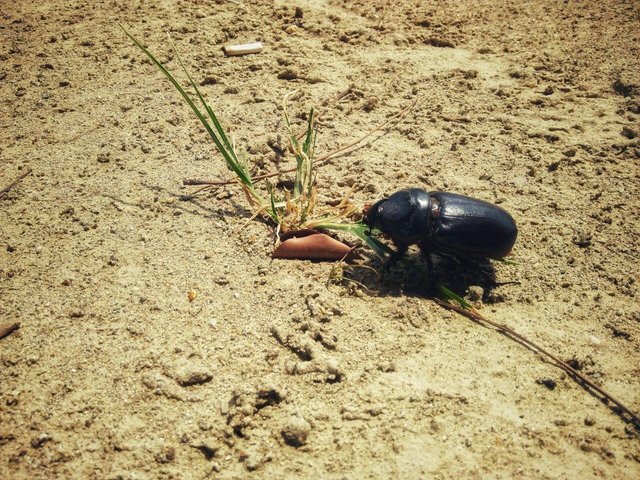
Beetle is a group of seranggayang form order Coleoptera / koʊliːɒptərə /. The word "coleoptera" is derived from Ancient Greekκολεός, koleos, and πτερόν, pteron, which when both are united means "sheathed wings", since most beetles have two pairs of wings. The wing couple in the front is called elytra. These winged pairs are hardened and thickened which can protect the wing pair behind it and also protect the back of the beetle's body.
The Order of Coleoptera has more species than any order, covering nearly 25% of all known animal life forms. [2] [3] [4] About forty percent of all insect species that have been described are beetles (about 400,000 species [5]) and new species are often found. The greatest economic familitace, Curculionidae, is also included in this order.
The spread of beetles is very wide. Beetles can be found in all major habitats, except in the oceans and polar regions. They interact with their ecosystem in various ways. Some beetle species are the producers of detritus, by destroying dead animal and plant tissues, eating certain types of carcasses, and consuming waste. Some species eat mushrooms. Some species are flower and fruit eaters. There are also species that are parasites or parasitoids. Some other species are predators or predators for other invertebrates. Many species of predatory beetle are important as agricultural pest control. For example, beetles in the Coccinellidae family that prey on aphids, scaly insects, thrips, and other plant-sucking insects that can cause crop damage.
In contrast, some species of beetle are prey for various invertebrate and vertebrate animals, including insects, fish, reptiles, birds, and mammals. Beetles are generally not a serious pest, but they include agricultural and industrial pests, such as the ColoradoLeptinotarsa decemlineata potato beetle, the Anthonomus grandis beetle, the red tumbler beetle Tribolium castaneum, and the cowpea beetle Callosobruchus maculatus. Including the death-watch beetle, the larva can cause serious damage to the building by gnawing on the wood.
Species in Coleoptera order are generally characterized by the presence of exoskeleton and hard front wing (elytra). This Elytra distinguishes beetles from most other insect species, except for some Hemiptera species. The beetle eksoskeleton consists of many dishes called sclerite, separated by thin stitches. This design creates beetle defenses while maintaining flexibility. The general anatomy of the beetles is quite uniform, although certain organs and aids may vary greatly in appearance and function among the many families in this order. Like all insects, the beetle's body is divided into three parts: head, chest (thorax), and abdomen. 